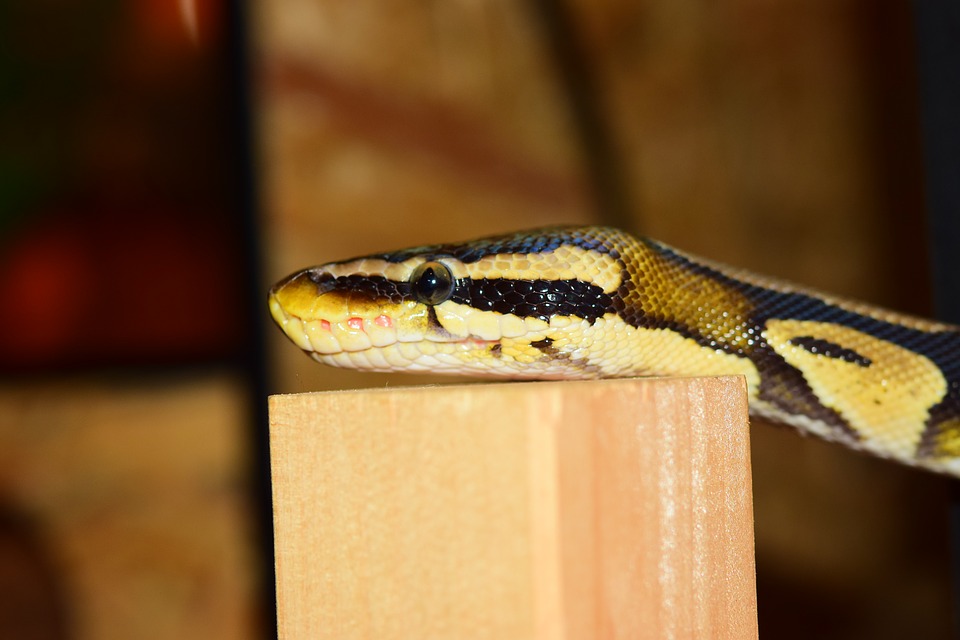What to feed ball pythons? You have to first know that ball pythons go on fasting periods for a variety of reasons. Temperature, for instance, can affect their appetite and what to feed ball pythons. They can get antsy in too hot or too cold temperatures, thus they stop eating. Ball Pythons are also reluctant when they encounter a food type they do not recognize – some, for example, prefer mice to rats, and when you change what you feed them, they will refuse to ingest it. In this article, you’ll find out what to feed ball pythons and some tips on how you feed them a healthy diet.
What to Feed Ball Pythons?: Prey Items Choices
With a snake like the Ball Python, you will have to deal with the fact that what to feed ball pythons is something that you’ll have to purchase, store, and feed rodents of various sizes to your pet. This is not a field for the squeamish.
You and the rest of your family will have to accept that there will need to be frozen little mice stored in a freezer in your home. Frozen packages of dead mice and rats of various sizes or ages can usually be bought from pet supply stores. For sanitary and health reasons, you should store these separately from your own food items.
It is always a good idea to sit down with your family and discuss this with them to make sure they are all on board. This would also minimize unwanted surprises should one of your family members one day rummage through the freezer for food items.
What to feed ball pythons include prey items that come in various sizes: pinkies, fuzzies, hoppers, weans, smalls, and adults. A Ball Python can eat prey larger than its heads, as the skin around its mouth is elastic in nature and allows it to engulf a large food item. However, just because your Ball Python can eat it doesn’t mean you should feed it thus.
It is recommended that you feed your Ball Python a frozen rodent that is no larger than the largest portion of its body. After being ingested, the swallowed prey item should just be large enough that your Ball Python gets a slight bump – never a bulge – after having been consumed. It is always better to err on the side of caution and feed them smaller food items than to feed them rodent sizes that seem too large.
Many breeders feed ball pythons on either live rat pups or mouse hoppers. If you are not amenable to this method, you can use a defrosted mouse hopper or fuzzy.
Keep in mind to never microwave frozen prey to thaw it. Exposure to extreme heat and pressure can make it explode – small food items tend to do this – and you may end up with prey guts all over the place. Instead, soak it in warm water until it is as close as possible to its live temperature. Achieving this temperature is especially important when you are feeding a hatchling; having it think its food is alive is more likely to elicit a strike or some sort of feeding response, since it is, foremost, a natural predator.
Whichever method you choose in what to feed ball pythons – whether live, pre-killed, or frozen – you should always be careful in feeding your Ball Python. It is terribly easy to stress them out during feeding time. This is why as a pet snake keeper; you may require hands-on assistance, patience, and persistence to be able to get through the feeding process. It does get easier over time, though, so you do not need to worry much.
Tongs are used to dangle the prey item near the Ball Python. Some might attack immediately and go after the food, but if they don’t, you will have to entice the snake to feed. You can do this by “walking” the prey as though it were still alive, rubbing it against your snake, warming it until it has temperatures that are higher than room temperature make the prey item smell better by dipping it in a dish of warm chicken broth or piercing the prey’s braincase with a pin to release more enticing odors.
What to Feed Ball Pythons?: Feeding Tips
You need to pre – kill prey can be stored in a freezer for up to six months. Before feeding, pre-killed prey should be thawed completely and warmed to slightly above room temperature. Feeding frozen/thawed prey items reduces the chances of diseases and parasites in the snakes, and it also reduces the chances of injury.
Keep in mind that when it comes to what to feed ball pythons, you should never use your fingers to dangle food in front of your pet. Use tongs, tweezers, or a hemostat to handle prey items instead. This reduces your risks of snake bites as a ravenous snake can strike at anything that moves, and that includes your fingers.
If your snake is not used to feeding on killed prey items, and you have decided not to feed them live prey, the habit of eating killed prey can easily be developed.
Remember to practice both patience and persistence as you train what to feed ball pythons. It can be challenging and even frustrating, but also rewarding and, in terms of long term care and feeding of your pet – will ultimately prove worthwhile. On the other hand, don’t overfeed your pet, either. Overfeeding will not only result in obesity, but in some animals, this can also cause prolapsed.
Make sure that when doing what to feed ball pythons use slow, deliberate movements when you are feeding your snake. Snakes can react aggressively to sudden movements – either as a defense mechanism or because of its predatory instinct. Once you have successfully fed your python, and the snake has the foot clamped firmly in its strong jaws, don’t make any sudden or jerky movements. Allow it sufficient quiet and undisturbed time to finish swallowing the entire meal.
Fresh water should be available to your pet at all times. Snakes will use readily available water to either drink from, or to soak in, so the bowl has to be large enough to accommodate your pet, allowing it to fully submerge. This will help the snake when it comes time for them to shed. Clean and refill the water bowl at least twice a week as part of what to feed ball pythons.
If you aren’t sure about what you’re doing, you can really injure the snake – whether in your handling of them or in how you feed them. Don’t force what to feed ball pythons just to get him to eat – especially if you do not have experience. Force – feeding requires handling the snake while you force food down its throat using tongs or tweezers. It is best to take them to a veterinarian first so that you can identify the cause of your pet’s feeding problems.




 Author and long-time animal lover. Sharing knowledge on pet care through experience and the written word.
Author and long-time animal lover. Sharing knowledge on pet care through experience and the written word.